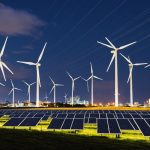Understanding Energy Efficiency in Office Environments
Achieving energy efficiency in office environments is crucial for both ecological responsibility and economic benefits. Energy efficiency refers to the practice of using less energy to perform the same task, reducing energy waste, and supporting a more sustainable future. In an office setting, this can significantly lower operational costs while minimising the environmental footprint.
Incorporating sustainable practices into office design is fundamental. This includes using eco-friendly materials, maximising natural light, and installing energy-efficient systems like LED lighting and programmable thermostats. By optimising the layout and structure, offices can reduce reliance on non-renewable resources and improve indoor air quality, contributing to employees’ health and well-being.
Also to discover : Unpacking brexit”s impact on london”s residential property development scene
The effect of energy-efficient designs is substantial. Not only do they lead to reduced costs through lower energy bills, but they also positively influence productivity. A well-designed office enhances comfort and focus, which can boost employee output. This link between a sustainable environment and productivity underscores the importance of thoughtful architecture in corporate spaces.
Embracing these practices results in a greener, more cost-effective workplace that supports sustainable goals without compromising functionality. As businesses strive for sustainability, the integration of energy efficiency into office design remains a pivotal component.
This might interest you : Unpacking the uk building safety act: implications for upcoming development projects
Proven Techniques for Sustainable Office Architecture
Creating sustainable office architecture hinges upon integrating sustainable architecture techniques, involving effective design strategies and the implementation of eco-friendly materials. This overarching goal can be broken down into several key components.
Passive Design Strategies
Passive design focuses on harnessing natural resources to enhance energy efficiency and occupant comfort. By maximizing sunlight utilization, offices can reduce dependency on artificial lighting, while strategic natural ventilation can cut down on the need for air conditioning. Insulation plays a crucial role in maintaining a consistent indoor climate; advanced insulation materials, such as recycled cotton or sheep’s wool, can offer superior thermal performance. Proper orientation and layout of office spaces also ensure optimal exposure to sunlight and wind, further promoting energy efficiency.
Active Energy Systems
Complementing passive strategies, active energy systems involve the use of renewable energy sources, such as solar panels, to generate power sustainably. Incorporating energy-efficient HVAC systems helps in reducing energy consumption. Smart building technology can optimize energy management by monitoring usage patterns and automatically adjusting systems, ensuring offices operate at peak energy efficiency while minimizing environmental impact.
Water Conservation Methods
Finally, sustainable office architecture should incorporate effective water conservation techniques. Installing rainwater harvesting systems allows for the collection and usage of rainwater. Water-efficient fixtures and choosing landscaping options with native plants contribute significantly to reducing water consumption, aligning with eco-friendly principles.
Case Studies of Successful Energy-Efficient Offices
Examining case studies of energy-efficient offices offers valuable insights into successful implementations. These architectural examples showcase how thoughtful design can lead to significant energy savings and improved workplace environments.
One notable example is the Bullitt Center in Seattle, often referred to as the world’s greenest office building. The design incorporates features such as rainwater harvesting, composting toilets, and a rooftop solar array. These choices result in a building that generates more energy than it uses, highlighting successful execution of energy-efficient strategies.
Another case worth exploring is the Edge in Amsterdam, acclaimed for its smart technology integration. The building utilises LED lighting combined with a network of sensors to maximise energy savings. The design’s outcome was a 70% reduction in energy usage compared to traditional offices.
From these architectural examples, several lessons and best practices emerge. Integrating renewable energy sources, leveraging smart building technologies, and designing with resource efficiency in mind are key. Going beyond standard practices, these examples demonstrate that transforming offices into energy-efficient spaces requires innovation and dedication.
By studying these successful implementations, businesses can learn to improve their own energy performance while promoting sustainability. These case studies prove that energy-efficient offices are not just feasible but also practical and beneficial.
Implementing Energy-Efficient Solutions
Introducing energy-efficient solutions into an office environment requires strategic planning and a thorough understanding of current energy consumption.
Developing a Comprehensive Plan
To begin, assess your office’s energy usage, identifying areas where improvements are possible. This involves performing a detailed cost analysis to prioritize actions and allocate resources efficiently. Establishing clear and achievable energy efficiency goals is crucial. Close collaboration with architects and engineers can streamline this process, ensuring that the technical aspects align with your scale and objectives.
Budgeting for Upgrades
When considering upgrades, weigh the initial investment against potential long-term savings. Energy-efficient technologies often entail upfront costs but can result in significant future cost reductions. Explore incentives and rebates offered by governments or organizations to offset these expenses. Consider a diverse range of sustainable technologies by conducting a thorough cost analysis to determine the most economical choices for your specific context.
Monitoring and Adjusting Energy Performance
Implementing appropriate tools for tracking energy performance is essential for ensuring continued energy efficiency. Conduct regular audits and updates to identify new opportunities and resolve inefficiencies. Utilize strategies such as periodic evaluations and energy performance adjustments to foster continuous improvement and maintain energy-saving trajectories over time.
The Future of Energy-Efficient Offices
The future of energy-efficient offices promises a captivating transformation, driven by emerging technologies and innovation in architecture. As businesses seek to minimize their environmental footprint, the demand for sustainable development in the commercial real estate market intensifies. A trend towards harnessing renewable energy sources like solar and wind power is becoming prevalent. These technologies not only reduce operational costs but also contribute to global sustainability efforts by decreasing reliance on fossil fuels.
Predictions for the future landscape of office environments suggest a shift towards smart building technologies. Imagine an office where lighting, heating, and cooling systems automatically adjust based on occupancy and weather conditions. Such intelligent systems optimize energy use, thereby promoting sustainability.
Sustainability is paramount in the fast-paced domain of commercial real estate. Companies now prioritize green certifications and eco-friendly building materials as integral components of their strategy. This shift not only enhances brand reputation but also meets the growing expectations of environmentally conscious employees and clients.
The future of energy-efficient offices is undeniably intertwined with innovation in architecture and technology. As we look ahead, the focus will be on creating spaces that are not only economical but also contribute to the well-being of occupants and the planet.











